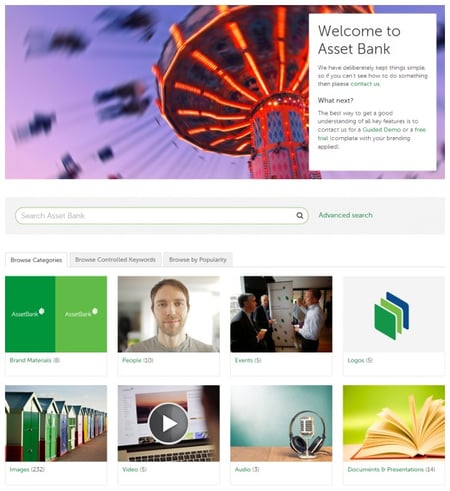
Internet Marketing Podcast with Asset Bank’s Mike Blom
We’re always keen to get to know other tech companies in Brighton. One of the better known is digital marketing consultancy, Site Visibility, also the people behind the Brighton SEO conference and the Internet Marketing Podcast, one of the world’s largest marketing podcasts. Given the latter’s success we were just a little bit excited when we were asked to give an introduction to the world of Digital Asset Management.
You can listen to the interview with Asset Bank’s Mike Blom here.
If you don’t happen to have your headphones handy here’s a quick summary of the key points discussed:
Mike’s role at Asset Bank
Mike is our product owner and his goal is to make sure Asset Bank continues to deliver excellent value to our customers.

Asset Bank Product Owner Mike Blom
What is a Digital Asset?
Any digital file that has value to an organisation such as photos, videos, design documents and pdf’s.
What is Digital Asset Management?
Digital Asset Management, or DAM, is the management processes that surrounds digital assets. You can think of it as a lifecyle. You create your photo, or a design in Adobe. Then you need to add metadata and put your asset into a location where it is easily accessible in the future. Once securely in the platform you want to distribute those assets and re-use them, getting maximum value out of your assets for a variety of purposes. Often at the end of this lifecycle you want to archive these assets, putting them somewhere appropriate for long-term storage. Digital Asset Management is a term that spans that lifecycle of a digital asset. Digital Asset Management software, like Asset Bank, is the technology that supports this life cycle.

Asset Bank Digital Asset Management software
Asset Bank Clients
Asset Bank is used by over 600 organisations across the globe. Our clients span a variety of industries from charities to universities to major global enterprises.
How it works for say, a travel company
Images and videos are a vital selling tool for travel companies. They spend a small fortune on creating these assets so it is very important that they can maximise the return on their investment. It needs to be easy for the right groups of people to get access to assets in the right format. If it’s easy to get hold of them they’re more likely to use them. Most organisations start off distributing their assets by email as well as making any edits themselves if they are required prior to distribution. But as your organisation grows and your marketing team gets more and more tied up with asset enquiries you quickly realise how much time can be saved by allowing partners to self-serve, searching for images that you have pre-approved which they can then crop, resize, or reformat all prior to downloading themselves. They can get their job done quickly and you’re saving time as well as getting value out of your asset.
The growing need for DAM
An increasing amount of organisations are accumulating a very large amount of content these days. If you think how easy it is to produce content, particularly things like photographs and videos, you realise you can’t keep that amount of data sitting around in hard drives or on pc’s and lap tops. It gets difficult to manage and efficiently gain access to that data, so having a DAM system is becoming an essential business need.
Cloud storage
Though certain organisations might need to have on-site storage we typically recommend cloud storage for your digital assets as it can scale infinitely as your asset volumes increase. We use Amazon S3 which is a standard cloud storage offering. For the purpose of archiving Amazon glacier’s lower storage costs can be worth a look.
So when does a company need DAM?
The typical threshold is when it’s no longer possible for companies to manage assets in a simple way. Typically organisations start off storing assets on network drives or external hard discs, they might then move to free cloud storage options like dropbox or google drive. But there comes a tipping point when a company is getting so many asset requests from internal or external users that it will be effecting productivity. This is the time to get a DAM, a nice simple central repository enabling the use of keywords, metadata and powerful search technology so these users can easily find and download the content they need.
If you would like to find out more about Asset Bank’s DAM system please get in touch.

